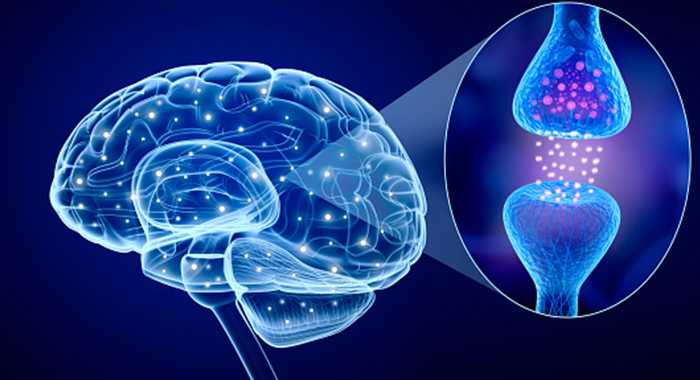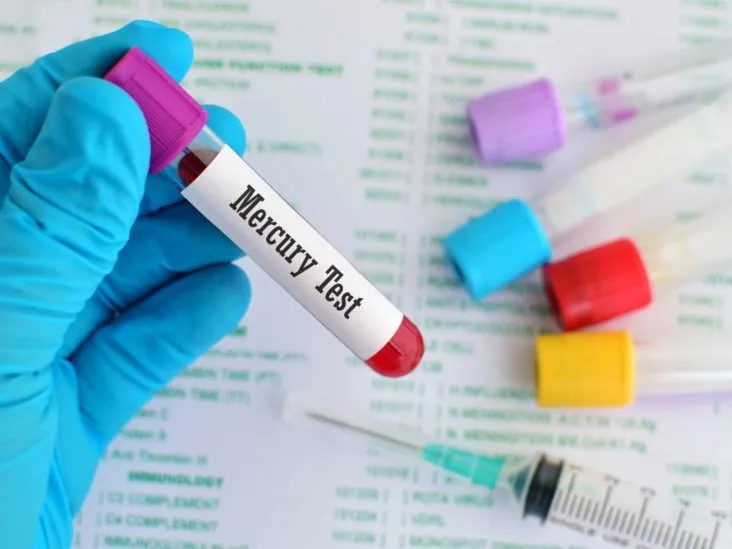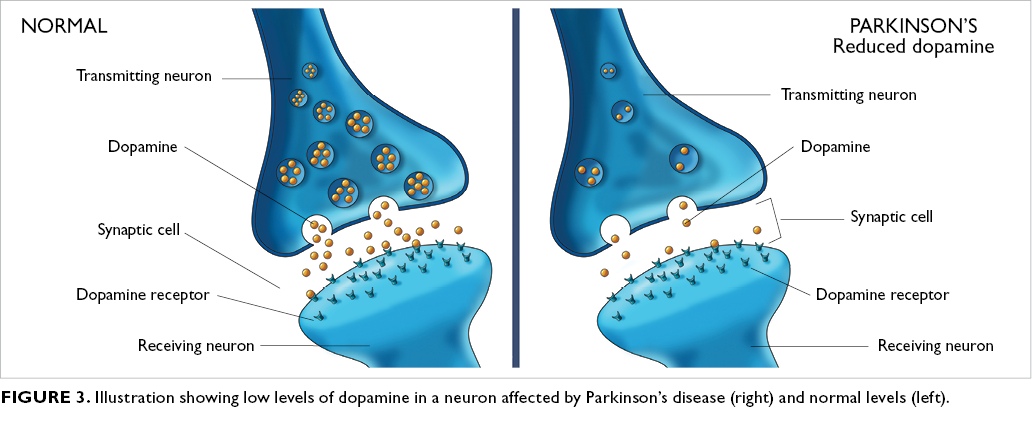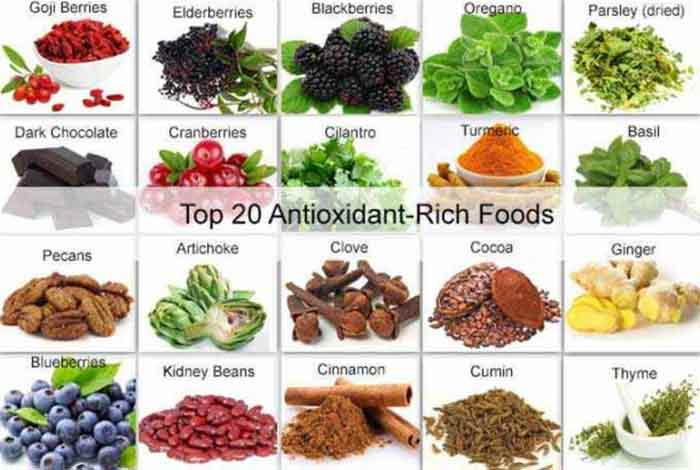
Parkinson’s disease (PD) is the second most common neurodegenerative disorder where neurons that make the neurotransmitter dopamine, responsible for human movement, are destroyed.1,2 Furthermore, such a condition has reached and affected approximately 4 million individuals, worldwide.1(120) Said condition is progressive in nature and characterized by a multisystem disorder affecting vulnerable populations, suspected to double in prevalence by 2030.1(120) Physical manifestations of PD include aberrant motor control such as bradykinesia (slowness of movement), rigidity, rest tremors, gait, and postural disturbances.1(120) As a means of appreciating PD, the following will consider hypothetical biomarkers which could exacerbate said condition as well as nutritional support to manage the same.

If an individual with PD has an organic acids test indicating a low tryptophan/large neutral amino acids (LNAA) ratio, such a result might encourage one to consider its possible relationship to PD. Tryptophan is an amino acid, which not only supplies and contributes to 3% of total body protein; said amino acid is also a precursor to serotonin; a substance essential for mood enhancement and sleep regulation.3 If there is a higher concentration of LNAAs relative to tryptophan, such a scenario would likely inhibit the degree of tryptophan entry into the brain to to transporter competition.4(129) Thus, although serotonin may not directly affect motor control, this author would ask an individual with low tryptophan/LNAA ratio how sleep quality/duration is, as well as their overall mood.

Heavy metals are ubiquitous in the air, soil, and water and generally bioaccumulate/worsen over a lifetime.5 Furthermore, heavy metals such as mercury and arsenic have been identified as having no known biological benefit.5(1) Of particular note; said elements are likely progenitors of carcinogens and they exhibit a palette of toxic effects upon the endocrine, renal, immunological, musculoskeletal, cardiovascular, and nervous systems.5(1) Considering that PD is a neurologically driven disorder, awareness of factors (heavy metal exposure) which could worsen the condition is paramount.

Oxidative stress, a condition induced by free radicals interacting with and oxidizing nearby tissues/cells/DNA, is a process considered a key driver in PD.5 Such oxidative events are now known to be associated with dopaminergic neurodegeneration; a key characteristic of PD.5(1) If an individual’s organic acids test indicates high/out of range 8-Hydroxy-2-deoxyguanosine (8OHDG), such a result indicates the presence of high oxidative stress.3(361) Sustained inflammatory responses are often a cause of high 8OHDG levels, however, consumption of antioxidants and removal of inflammatory stimuli would be reasonable steps.3(361) Assuring adequate antioxidant levels is also relevant; i.e., if beta carotene (a precursor to vitamin A, which is an antioxidant) is low, improving said deficiency could help control inflammation/oxidative stress markers.7

If organic acids/blood tests reveal low tryptophan/LNAA ratios, high levels of heavy metals (i.e., arsenic/mercury) exposure, and high oxidative stress/low antioxidant concentrations, steps should be taken to improve said markers. Increasing tryptophan-rich foods or directly supplementing with 5-hydroxytryptophan (a product of tryptophan) could help improve likelihood of transport across the blood-brain barrier to produce serotonin.3(221) Furthermore, this author would suggest a 5-hydroxyindoleacetate test (aka 5HIAA; a marker of serotonin use) to ensure optimal serotonin levels.3(221)

Heavy metal exposures can be managed by first identifying the sources (i.e., mercury fillings, industrial sewages, agricultural fertilizers, batteries, and electronic industries) and attempting to reduce the same.8 Furthermore, incorporation of heavy and sustained sweating (i.e., sauna) has been shown to facilitate removal of metals such as cadmium and mercury in addition to a positive correlation with improvements in blood pressure, dementia, endothelial function systemic inflammation, and oxidative stress.9 As such, the implementation of a sauna in addition to minimizing exposures of heavy metals could help lower blood levels of the same.

Oxidative stress could be minimized by increasing all antioxidants identified as being deficient. If an individual had low beta carotene, for example, incorporation of vitamin A-rich foods (i.e., liver, dairy, eggs, fatty fish) could help return said vitamin back to optimal ranges.7(371) If beta-carotene was re-tested and remained low, this author would consider supplementing with the same until blood levels returned to normal. Finally, oxidative stress markers (8OHDG) would likely lower by reducing the individual’s exposure to heavy metals, mentioned in the previous section.
In conclusion, PD is the second most common neurodegenerative disorder where neurons that make the neurotransmitter dopamine, responsible for human movement, are destroyed. Such a condition has reached and affected approximately 4 million individuals, worldwide, presenting as bradykinesia, rigidity, rest tremors, impaired gait, and postural disturbances. Including interventions which reduce inflammation, oxidative stress, and improve mood/sleep can help slow and possibly mitigate deeper neurodegeneration of PD. Such nutritional support, as part of a larger intervention, is likely to help improve the individual’s condition, health, and overall quality of life.
References
1. Ricci M, Lazzaro GD, Pisani A. Assessment of motor impairments in early untreated Parkinson’s disease patients: The wearable electronics impact. IEEE J Biomed Health. 2020;24(1):120-130. doi:10.1109/JBHI.2019.2903627.
2. Kohlstadt I. Advancing Medicine with Food and Nutrients. 2nd ed. London, NY: CRC Press; 2012.
3. Lord RS, Bralley, JA. Laboratory Evaluations for Integrative and Functional Medicine. 2nd ed. Duluth, GA: Genova Diagnostics; 2012.
4. Lucini V, Lucca A, Catalano M, et al. Predictive value of tryptophan/large neutral amino acids ratio to antidepressant response. J Affect Disord. 1996;36(3):129-133. doi: https://doi.org/10.1016/0165-0327(95)00071-2.
5. Sears ME, Kerr KJ Bray RI. Arsenic, cadmium, lead, and mercury in sweat: A systematic review.J Environ Public Health. 2012. doi:10.1155/2012/184745.
6. Trist B, Hare DJ, Double KL. Oxidative stress in the aging substantia nigra and the etiology of Parkinson’s disease. Aging Cell. 2019;18(6):1-23. doi: https://doi.org/10.1111/acel.13031.
7. Gropper SS, Smith JL, Carr, TP. Advanced Nutrition and Human Metabolism. 7th ed. Boston, MA: Cengage Learning; 2018.
8. Pourjamali R, Sadrabad EK, Hashemi SA, et al. Evaluation of point-of-use drinking water treatment systems efficiency in reducing or removing physiochemical parameters and heavy metals.JEHSD. 2019;4(1):717-726. doi.org/10.18502/jehsd.v4i1.490.
9. Hussain J, Cohen M. Clinical effects of regular dry sauna bathing: A systematic review. Evid Based Complement Alternat Med. 2018;1-30. doi:10.1155/2018/1857413.
-Michael McIsaac
